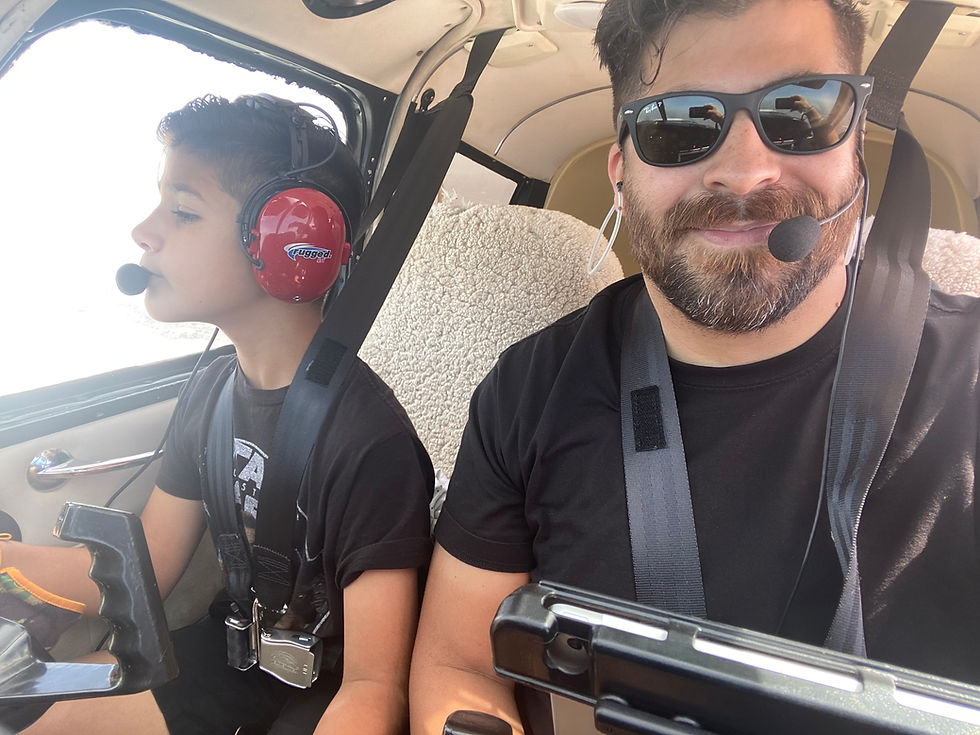Obtaining Local Knowledge
- Red Horse Aviation

- Aug 15, 2024
- 4 min read
Updated: Feb 15

Discovering information about a particular airport can be efficiently accomplished by conducting phone inquiries. Determine the appropriate contact person, the essential questions to ask, and the key details required for your preparation. These resources are highly beneficial to pilots but are frequently disregarded or forgotten.
NOTE: It is important to note that this is to supplement your traditional methods learned during your primary training.
Many student pilots find that CFIs and flight schools often overlook or fail to mention the resources available to pilots when preparing for a cross-country flight or exploring a new airport.
Along with the standard preflight preparations, such as reviewing weather conditions, TFRs, NOTAMs, and the Chart Supplement information, here are several methods to acquaint yourself with an unfamiliar airport. Please note that not all of this information may be applicable to every airport.
Ask Around
It may seem very obvious, but it is important to mention. Connect with individuals who have previous experience, including locals if feasible.
Utilize social media platforms, such as Facebook and Instagram; you are likely to receive responses or find user comments or other links. Additionally, refer to AOPA's airport directory for valuable insights from experienced pilots.
Airnav.com typically offers additional information or links towards the bottom of the page for specific details on traffic patterns, among other things. For instance, Santa Paula Airport has its own website listed on Airnav.com, providing new pilots in the area with detailed information about the airport and its operations.
Old Fashion Way
If possible, contact the FBO directly. Inquire about any advice they can offer, as some FBOs may provide taxi instructions to their site. Request information on their operating hours, local fuel prices, any landing or ramp fees (such as tie-down or overnight charges), and additional details.
Obtain information about anything unusual or specific to the airport, such as local reporting points, noise abatement procedures, special day or night VFR procedures, etc.
Example - if you fly to North Las Vegas (KVGT) airport VFR you would have to fly to the casino hotel then continue the approach. It’s nothing but frustrating to fly into an airport where someone is announcing their position, and you have no idea where that is.
Ask the Question – are there any places where the weather changes first? For an example at a particular airport fog will form in this certain area or around a particular time of day the winds will be out of the west, east etc.
Are there any recommendations on pattern entry...? I.e. areas to not fly over or local reference points to call out on the UNICOM or tower Inbound.
When inquiring at smaller uncontrolled airports, clarify whether they refer to the airport by its name or the city's name. Given that many uncontrolled airports share frequencies, it is crucial to identify the correct identifier to listen for.
In some backcountry strips, there are “one way in, one way out” scenarios. In this case, it would be very beneficial to know which direction is always favorable—what is the "gotcha"? i.e., trees, power lines, high spots, or rough areas on the strip, or blind spots.
For many of the backcountry or smaller strips, simply ask: which direction do you come from? This makes a big difference in areas where you cannot see the strip until you are right over it. Do you use a shallow or steep approach, and regardless of wind, which runway do you use? There are some strips where, no matter what, you are landing uphill, and that's the only shot you have. Or just don't land.
Test the Waters Before Landing
Before landing at an unfamiliar airport, it's beneficial to assess the situation by conducting a low pass or circle the airport 500 feet above pattern altitude. This approach offers two key advantages:
First, you have the opportunity to assess the runway condition and the surrounding environment. If you are landing at a remote airfield, you can ensure the runway is clear of any wildlife to avoid encountering a deer upon landing.
Additionally, the low pass provides insight into the current wind conditions and alerts you if the crosswind component exceeds safe limits during the final approach. Remember, the windsock is the main indicator of wind direction. If conducting a low pass, always maintain the safe altitude; don’t show off; you never know who is watching.
As an additional real-life example, when flying to Catalina Airport in Southern California, note that the airport sits atop the island, with an upward-sloping terrain towards the runway on the west side and a cliff at the approach end, resulting in downdrafts due to wind patterns.
The staff at Red Horse Aviation is prepared to assist you as you go through your pilot training experience. Give us a call at 707-301-9928 or contact us online.
In conclusion
Obtaining local knowledge about a new airport or backcountry landing spot is crucial for pilots. It helps ensure safety, enhances flight planning, and improves navigation. By connecting with local pilots, studying charts, and understanding weather patterns, pilots can make informed decisions. This preparation not only builds confidence but also promotes a smooth and successful flying experience. Prioritizing local knowledge is key to mastering new airstrip operations and ensuring a safe journey.









Comments